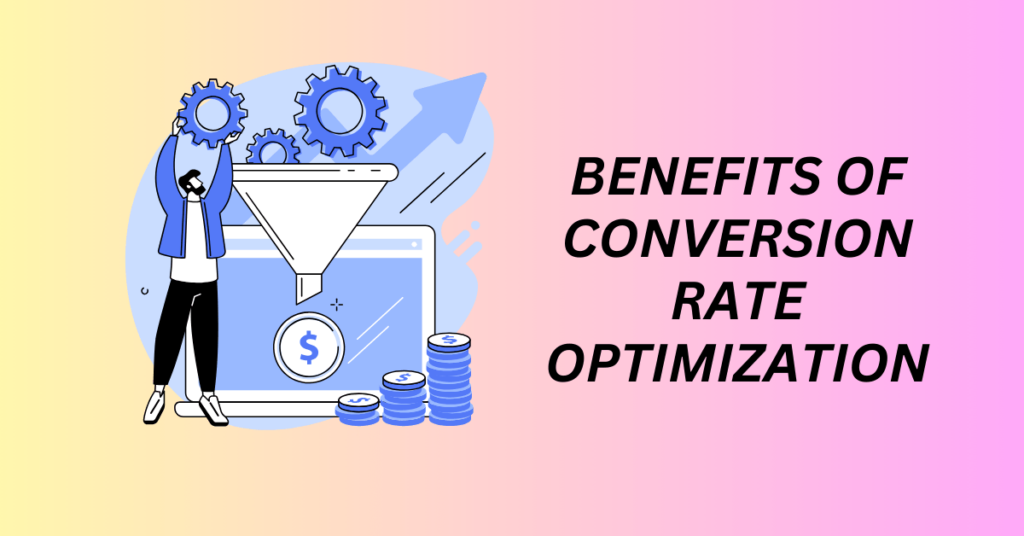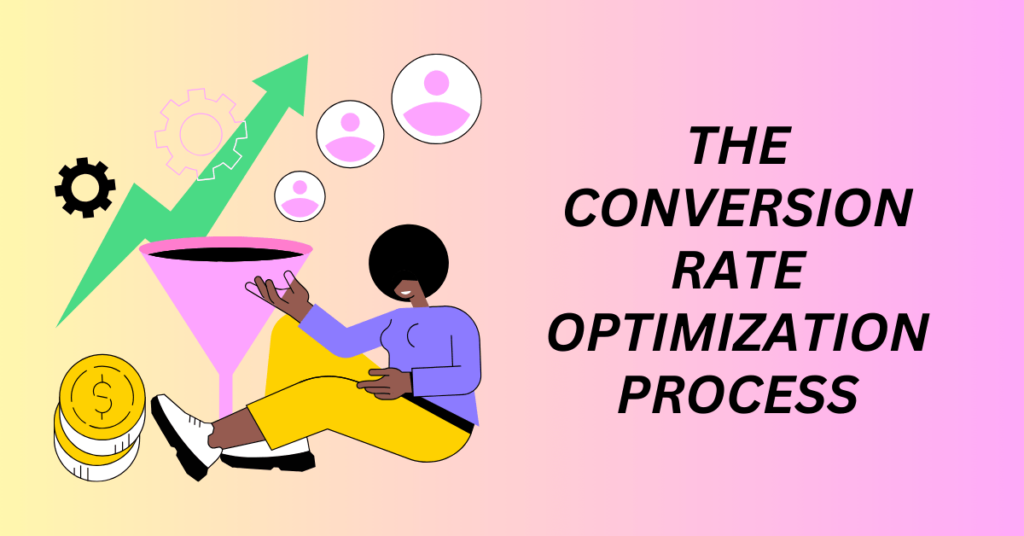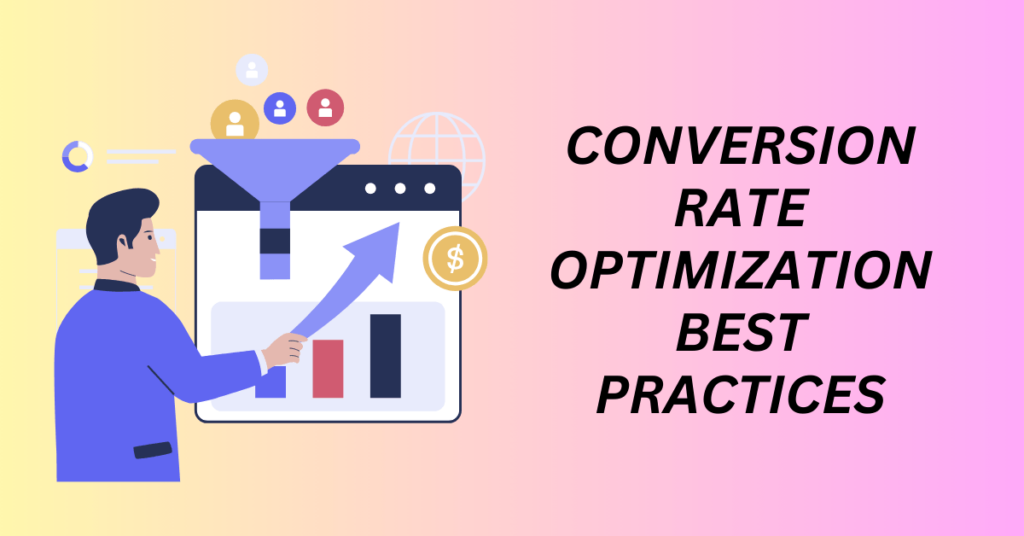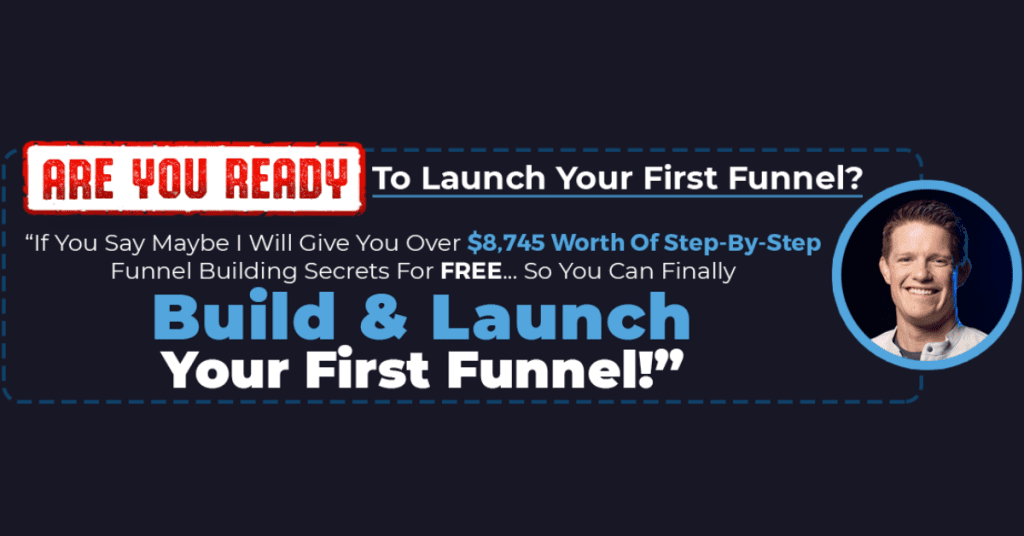In today’s bustling digital landscape, online presence is no longer enough to succeed. Your website serves as the virtual storefront of your business. But how do you transform your website into a powerful tool that drives conversions and fuels business growth? The answer lies in mastering the art of Conversion Rate Optimization (CRO).
Conversion Rate Optimization is not just a fancy term. However, it’s a strategic approach that can significantly impact your business’s bottom line. It’s about understanding your audience, analyzing their behaviour, and making informed, data-driven changes to your website to ensure a higher percentage of visitors take the desired actions. In short, it can be making a purchase, signing up for a newsletter, or filling out a contact form.
In this post, we’re going to delve into the world of Conversion Rate Optimization. We will uncover essential techniques, best practices, and actionable insights that can help you transform your website into a conversion powerhouse.
Start Your Website with Bluehost Web Hosting – Exclusive Discount and Support Available
Overview of Conversion Rate Optimization

Conversion rate optimization is a system of methods aimed at increasing the percentage of website visitors who take a desired action.
The action in question could be making a purchase, signing up for a service, filling out a form or downloading a file.
What is Good Conversion Rate?
A good conversion rate signifies the effectiveness of your marketing efforts in turning visitors into customers, subscribers, or users who take a desired action on your website.
So, what exactly constitutes a good conversion rate?
Firstly, it’s important to recognize that what qualifies as a “good” conversion rate can vary significantly based on industry, business model, and the specific goals of a campaign. In general, a good conversion rate is one that surpasses your industry’s average and aligns with your objectives.
An e-commerce website might aim for a conversion rate related to purchases, while a newsletter sign-up page might focus on subscriber conversions. Regularly analyzing industry benchmarks and understanding your target audience’s behaviour can guide you in setting realistic conversion rate goals.
Moreover, a good conversion rate is not static. It’s a moving target that can evolve based on changes in the market, user expectations, or shifts in your product/service offerings. In addition, continually monitoring your conversion rates, conducting A/B tests, and iterating on your strategies are essential steps to improve and maintain a good conversion rate.
How to Calculate The Conversion Rate
Calculating conversion rates is a fundamental practice for any business aiming to measure the success of its online presence and marketing efforts. Understanding how to calculate conversion rates not only provides valuable insights into user behaviour but also aids in optimizing strategies to enhance performance.
- Define Your Conversion Goal: First and foremost, clearly define what constitutes a conversion for your business. Whether it’s a purchase, a form submission, or a sign-up for a newsletter, a conversion is essentially a meaningful action taken by a user on your website. Once you have a precise conversion goal in mind, you’re ready to proceed to the next step.
- Gather Data: Collect the necessary data to calculate your conversion rate. This typically involves determining the number of users who completed the desired action (conversions) and the total number of visitors to your website during a specific time frame.
- Calculate the Conversion Rate: To calculate the conversion rate, use the following formula:
Conversion Rate = (Number of Conversions / Total Number of Visitors) x 100%
For example, if you had 500 conversions and 10,000 visitors to your website, the conversion rate would be (500 / 10,000) x 100% = 5%.
By employing this calculation formula, you gain valuable insights into your website’s performance. Not only that, you can also take informed actions to optimize for better conversion rates in the future. But if you’re using a web analytics tool like Google Analytics, you don’t have to calculate your conversion rate manually. Google Analytics will calculate your conversion rate automatically for you.
Start Your Website with Bluehost Web Hosting – Exclusive Discount and Support Available
Benefits of Conversion Rate Optimization

Conversion Rate Optimization (CRO) involves refining your website to boost the proportion of visitors who take a desired action. Whether it’s making a purchase, filling out a form, signing up for a newsletter, or any other predetermined goal.
The process focuses on enhancing user experience and streamlining the customer journey to maximize conversions. Therefore, let’s explore the multitude of advantages that an effective CRO can bring to your business:
1. Amplified ROI and Revenue Growth – Conversion Rate Optimization
Conversion Rate Optimization directly impacts your return on investment (ROI) and revenue growth. By optimizing your website, you essentially extract more value from the existing traffic.
An effectively optimized website increases the likelihood of visitors taking desired actions. This includes completing a purchase or subscribing to a service. This results in higher revenues without the need to invest significantly in attracting more traffic. It will lead to a remarkable improvement in your ROI.
2. Enhanced User Experience and Engagement – Conversion Rate Optimization
CRO involves a deep understanding of your target audience’s behaviour, preferences, and pain points. By analyzing these aspects and employing A/B tests, heatmaps, and user surveys, you can optimize your website to provide a seamless and delightful user experience.
A website that is easy to navigate, loads quickly, and offers valuable content encourages higher engagement and trust. A positive user experience promotes conversions. In addition, it establishes a strong foundation for building lasting customer relationships and driving long-term business success.
3. Data-Driven Decision Making and Continuous Improvement – Conversion Rate Optimization
At the heart of CRO lies a data-centric approach. Through comprehensive data analysis, you gain valuable insights into visitor behaviour, enabling you to make informed decisions. Furthermore, A/B testing and user feedback provide concrete evidence of what strategies work best for your audience.
This iterative process empowers you to continually refine your marketing strategies, optimize your website’s design, tweak content, and tailor offers to cater to evolving customer needs and preferences. Over time, this approach ensures that your website remains dynamic and effective, fostering a culture of continuous improvement and adaptation.
4. Lower Customer Acquisition Costs – Conversion Rate Optimization
An often overlooked advantage of CRO is its potential to lower customer acquisition costs. When you increase your conversion rate, you get more value from the same marketing budget and efforts. This means you can allocate resources more efficiently, potentially lowering the overall cost per acquisition.
It’s a win-win situation where optimizing your website not only drives more conversions. Not only that, it also makes your marketing investments more cost-effective.
5. Better Insights for Product and Service Development – Conversion Rate Optimization
Understanding the conversion process provides valuable insights into what aspects of your product or service resonate with your audience. By analyzing the conversion path and identifying bottlenecks or friction points, you can refine your offerings.
This, in turn, allows you to tailor your product or service to better meet customer needs. And ultimately, enhancing customer satisfaction and loyalty.
Incorporating a robust conversion rate optimization strategy into your digital marketing efforts is a strategic move that yields numerous benefits. It’s about more than just improving the numbers. In addition, it’s about fostering a customer-centric approach, driving growth, and maximizing the potential of your online presence.
The Conversion Rate Optimization Process

Conversion Rate Optimization (CRO) is a systematic approach aimed at enhancing the effectiveness of a website in converting visitors into customers or achieving specific desired actions. Besides, the CRO process involves a series of carefully orchestrated steps designed to analyze user behaviour, identify areas for improvement, and implement data-driven changes to boost conversions.
Here’s a detailed breakdown of the CRO process to help you navigate the path towards optimal website performance:
1. Research and Data Analysis
Firstly, the journey begins with a thorough understanding of your audience and their behaviour. Analyze user data, conduct user surveys, employ heatmaps, and scrutinize website analytics to identify user patterns and pain points.
Then, dive into demographic information, user preferences, and the paths users take through your website. This research phase is crucial for shaping hypotheses and strategies to optimize the user experience and drive conversions.
2. Hypothesis and Testing Strategy
Then, based on the insights garnered from the research phase, formulate hypotheses to address identified areas for improvement. A hypothesis could be an assumption about how changing a specific element on a webpage might positively impact user engagement and conversions.
With hypotheses in place, develop a structured testing strategy, often utilizing A/B tests, multivariate tests, or split tests to validate these assumptions. This step involves creating variations of your webpage and presenting them to different segments of your audience to determine which version yields the best results.
3. Implementation and Iteration
After the testing phase, gather and analyze the test data to determine the winning variation. Then, implement the changes indicated by the successful test and continuously monitor the impact on your conversion rate.
The CRO process is iterative, meaning you repeat this cycle—research, hypothesis, testing, implementation, and analysis—continuously to refine and optimize your website. Over time, this iterative approach allows you to fine-tune your website, aligning it with user needs and preferences for optimal conversion performance.
By following this methodical CRO process, you can steadily improve your website’s ability to convert visitors into valuable actions, leading to enhanced user satisfaction, increased engagement, and ultimately, a healthier bottom line for your business.
Start Your Website with Bluehost Web Hosting – Exclusive Discount and Support Available
Conversion Rate Optimization Best Practices

To help you ace your CRO game, let’s take a closer look at 12 crucial best practices that can significantly impact your website’s performance:
Leverage Web Analytics Tools
Firstly, you need to understand user behaviour in making informed decisions. Web analytics tools like Google Analytics can provide detailed insights into how users interact with your website, including where they come from, what they click on, and where they drop off. This data forms the basis of your optimization strategies.
Run A/B Tests
A/B testing, also known as split testing, involves creating two or more versions of a webpage and presenting them to users. By comparing how users respond to different variations, you can identify the most effective design, content, or layout to drive conversions. It’s all about data-driven decisions.
Optimize Your Website’s Speed
A one-second delay in page load time can result in a significant drop in conversions. This means you will need to optimize your website’s speed. Techniques such as image optimization, minimizing HTTP requests, and leveraging browser caching can drastically improve loading times.
Use Compelling CTAs (Call to Action)
CTAs are the gateway to conversions. You need to tell your visitors what they need to do. They are not going to click on your button or fill up your contact form if you don’t tell them.
Instead, they will be wandering around exploring your landing page or website. This is why you need to craft compelling and action-oriented CTAs that can make a world of difference.
To do this, you must use enticing phrases that convey value and urgency, guiding users towards the desired action. It can be purchasing a product or signing up for a newsletter.
Offer Support via Live Chat
Customer support is really important. People don’t like to wait or going through chatbot support that is not working and helping. This is why you should offer real-time support through live chat if possible. This can greatly enhance user experience.
Visitors appreciate immediate assistance when they have questions or concerns. Live chat humanizes the digital experience. This provides a personal touch that can boost trust and conversions.
Showcase Customer Reviews
Trust is a key factor in converting visitors. Your visitors will not listen to you because you will tell them everything good about what you are promoting. This is why you will need to show your testimonials.
Displaying genuine customer reviews and testimonials prominently on your website can build credibility. You can encourage satisfied customers to share their experiences. Then, showcase these testimonials strategically to instil confidence in potential customers.
Use Compelling Visuals
Visual content is a powerful tool to capture attention and convey messages quickly. Incorporate high-quality images, engaging videos, and informative infographics to create a visually appealing and engaging website. Visuals can evoke emotions and leave a lasting impression on visitors.
Retarget Engaged Visitors
Not every visitor converts on their first visit. In fact, there is a study where people will take up to 7 times to finally buy from you.
Hence, you need to implement retargeting campaigns to re-engage users who have shown interest in your products or services. For this, you need to tailor ads and personalized messages that can bring back potential customers and encourage them to complete the desired action.
You can do this by segmenting your potential customers based on the stage they are in your sales funnel and sending personalized messages to them.
Use Fewer Form Fields
You want to lower the barrier and complexity for them to complete the action. This means getting the bare minimum information you need in the contact form.
Lengthy and complex forms can be a significant barrier to conversions. Hence, you need to simplify the user experience by asking for minimal information. Fewer form fields reduce friction and increase the likelihood of visitors completing the form.
Optimize Your Website for Mobile Devices
Mobile optimization is non-negotiable in today’s world. In fact, most of your visitors will come from mobile devices. Your job here is to ensure your website is fully responsive and delivers an exceptional experience on various devices.
This will include a web design that can adapt to different screens and is able to display different elements effectively. In addition, it needs to be easy to navigate and load quickly to drive conversions on smartphones and tablets.
Optimize Your Web Copy
Your website’s copy is the voice of your brand. Craft persuasive, clear, and concise copy that effectively communicates your value proposition. Focus on benefits and use language that resonates with your target audience. A compelling copy can guide visitors towards conversions.
You need to focus on the benefit of the product to your customers but not the features only. They will decide to buy because it benefits them but not how good is your product spec.
When you look at the buyer decision-making process, people mostly make decisions based on emotion and justify them with logic.
Continuously Monitor and Iterate
The digital landscape is ever-evolving, and so are consumer behaviours and expectations. Regularly monitor your website’s performance using the aforementioned tools and techniques. Analyze the data, gain insights, and iterate on your strategies to keep your website optimized and in tune with your audience’s needs.
Incorporating these detailed conversion rate optimization best practices into your digital strategy can elevate your website’s performance, drive conversions, and enhance user satisfaction. Remember, CRO is not a one-time effort but an ongoing journey of refinement and improvement, so stay agile and keep optimizing!
Start Your Website with Bluehost Web Hosting – Exclusive Discount and Support Available
Final thoughts: Conversion Rate Optimization
In short, it’s evident that Conversion Rate Optimization holds immense potential for unlocking higher conversion rates and driving business growth. Therefore, mastering the art of CRO is not just an advantage—it’s a necessity.
By now, you’re equipped with the knowledge, strategies and best practices to elevate your website’s performance and turn it into a conversion-centric powerhouse. In particular, from the importance of leveraging web analytics tools to crafting compelling calls to action, optimizing website speed, and embracing the power of retargeting, the journey of CRO is multifaceted and dynamic.
Now, armed with these insights, it’s time to take action. Implement these strategies, test, measure, and optimize. Let your website evolve into a conversion powerhouse, fueling your business’s success and creating lasting connections with your audience.
Start Your Website with Bluehost Web Hosting – Exclusive Discount and Support Available





